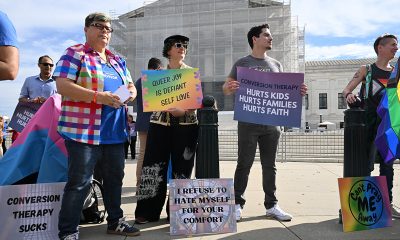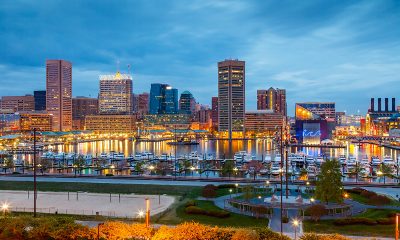Opinions
I survived overwhelming grief thanks to unexpected support systems
A lifeline I didn’t know I had — or needed
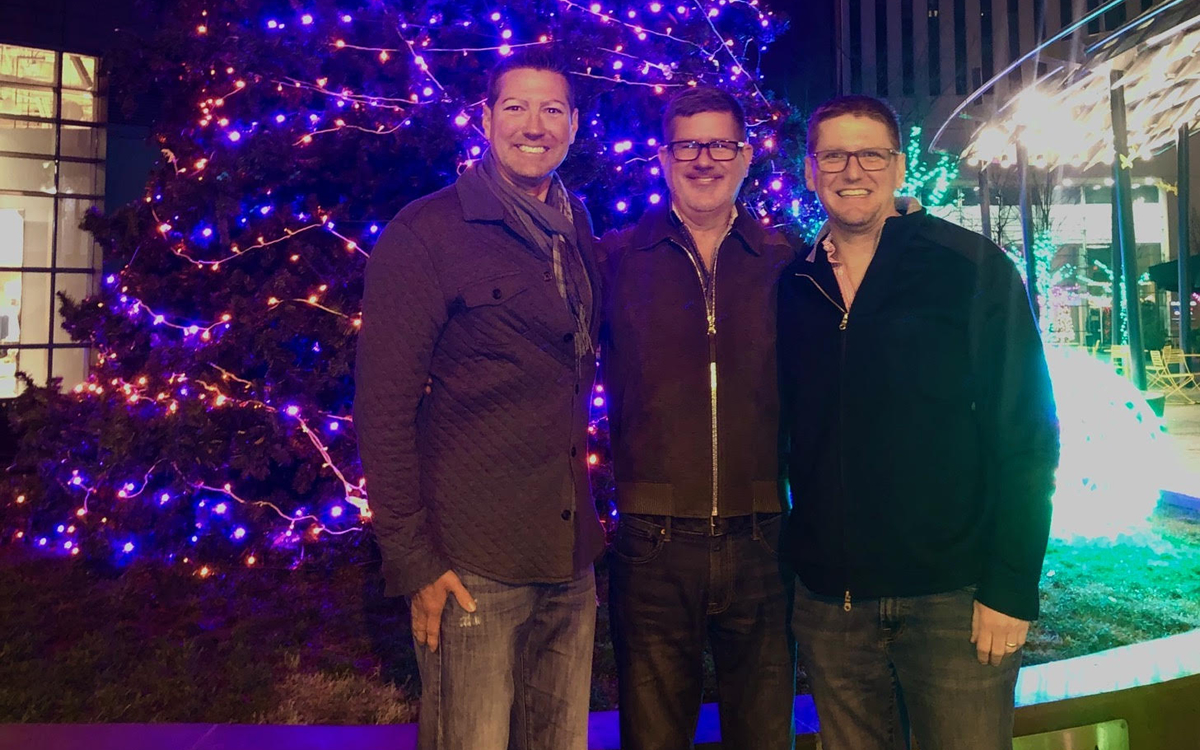
When tragedy strikes, you never know what will happen next. What’s the next punch in the gut that will knock you unconscious? That is what happened to me on March 20, 2021, when my beautiful, healthy, loving brother Tom died suddenly of a heart attack. A man who was 53 years old, ran five miles a day, and ate salads, tuna, and grilled chicken. And here I was, his younger brother, who sometimes eats poorly and rarely exercises, left to pick up the pieces once again.
The news came as a shock. My husband and I were relaxing, reading the paper and having a mimosa. Then, my brother’s mother-in-law called. As she relayed to me what had happened, I blacked out, unable to comprehend what she was saying. In fact, I did not even know who she was. I handed the phone to my husband, confused and convinced that what was happening was not actually happening. But it was happening. My brother was dead, and my precious 15-year-old niece was alone with him when it occurred.
I collapsed on the floor and was inconsolable, and I remained in that state for hours. Even our two cats were concerned, circling me nonstop, as I loudly wailed and screamed, noises they had never heard in the 11 years since we adopted them from the shelter. Finally, my husband Paul told me that I had to call my parents to tell them what had happened. Somehow, I mustered the strength to do so, recalling the similar moment in 1997 when my parents called me to inform me that my oldest brother David had died by suicide. I called them, but I don’t remember much of what I said. All I remember was my mom saying, “Not Tom!” Next, I called my mom’s sister and informed her of the news. More shock, grief, anguish, and confusion. Worried about my parents being alone, I left messages with their friends, Jack and Nina, and asked if they could go over and be with them until I could get there.
My husband, Paul, and I struggled that day to simply figure out how and when to fly to South Carolina to be with my family. I was completely useless, unable to do anything to help with arrangements. Paul put aside his grief for the loss of his brother-in-law and friend to take care of me, like he’s always done. And ever since, he has continued to do so—through all of my anxiety attacks, grief, anger, and inability to attend social functions. He has been my rock, and my love for him has never been greater.
What happened in the days after I got to South Carolina remains a blur — flowers, gifts, kind calls, me having to write my brother’s obituary and help with arrangements, including picking up the death certificate — on my birthday no less. What also happened was silence. Silence from friends and family members who I assumed would be there in my greatest moment of need but were surprisingly absent. Finally, my good friend Kevin said it best: “Don’t focus on those who have disappointed you; focus on those who have surprised you by being there.”
Great advice? Yes. Easy to follow? Not exactly.
However, I followed Kevin’s advice. I was confident that I could rely on my closest group of friends — the “Balt 8” (named for eight of us who became great friends while living in Baltimore). Later that year, while attending my first party since Tom’s death, I had a horrific anxiety attack, and Kevin asked no questions and instead took me for a long walk in the cold and misty rain. My best friend, Joy, who I have known since college and is like a sister to me, was there day and night. My close friend Maureen sent me TV recommendations to help make me laugh.
While I knew that the Balt 8 would lift me up, what I remember the most during this time were the people who unexpectedly came to my rescue.
After Tom died, one of the first people who reached out to me was Renee, a friend from high school who I had not seen in person since our graduation in 1988. Suddenly this long-lost high school classmate became a rock who I would rely on for months to come and who sent care baskets filled with goodies from her home state of Louisiana. I guess it shouldn’t surprise me — on Jan. 6, 2021, when I, along, with most Americans watched in horror as a mob besieged the U.S. Capitol, I was living not too far away. Too shaken by what I had witnessed, I called my supervisor at The Trevor Project to let them know that I would not be able to perform my volunteer shift that night. Anxiously, I waited for my husband to get home safely from work when I saw an incoming call via Facebook Messenger. It was Renee. She just wanted to make sure that my husband and I were safe.
Other friends came through via simple acts — my friends Tim and Regan in Seattle held a candlelit vigil for my brother whom they had never met, while my friend Steve sends me texts often just to see how I was doing.
While we live in Washington, D.C., we still keep our sailboat in Baltimore where we were lucky enough to land on the marina’s J-Dock and quickly made friends. Self-dubbed “The Island of Misfit Toys,” after the classic Christmas special, somehow, we were all brought together and became friends. During my grief period, everyone on the J-Dock brought something different to the table. Some brought tenderness and love; others brought levity with crude jokes that I was embarrassed to laugh at. Our boat neighbor Carrie asked me each morning how I was doing, and when I was having a tough day, she’d recommend we go to the pool, where we would relax, have a cocktail and laugh nonstop, usually at ourselves. When the bouquet of flowers for Tom’s funeral arrived from the J-Dock, it was obvious that Carrie, a fellow college football fan, had chosen it — the beautiful orange and purple flowers were a testament to my brother’s beloved favorite team, the Clemson Tigers. It was very typical of Carrie — she shows her love in a quiet, reserved way, but it’s still felt strongly.
While I appreciated everyone’s support at the marina, there are two friends that I relied on more than any — Jon and Jill.
After Tom’s death, I learned that my family has a history of heart disease. I went to my doctor and had every conceivable heart-related test, and thankfully, there was no evidence of heart disease. However, that didn’t completely eliminate my fears. The thoughts kept racing in my head: “Tom was the healthy one, so how can I be OK?” One day, I called Jon to ask him if he could stay on the phone with me, as I was having an anxiety attack. With his trademark humor, he quickly said, “You are not having a heart attack, drama queen.” But then he added, “I’ll be right there.” And he was, time and time again.
Later that summer, I had a similar anxiety attack, and I texted Jill. Luckily, she works from her boat, so she was home, and when I asked if she had a few minutes, instinctively, she knew something was up. Within seconds, I could feel my boat shift, signaling that someone was coming aboard, and there was Jill with her chihuahua, Little Dog, to help calm my nerves. “I don’t know what to do,” Jill admitted. I explained that I didn’t either. “Why don’t we go for a walk and get off our boats?” she suggested. I agreed to walk just around the marina, as I did not feel emotionally strong enough to leave the safety net of the docks. We discussed what anxiety feels like, but we also enjoyed our surroundings and Little Dog’s idiosyncrasies. And I laughed. Thank goodness, I laughed.
My brother’s death also resulted in a seismic shift in my relationship with his ex-wife, Chris. On the surface, Tom and Chris’s relationship may have seemed unconventional to many — over the course of 30-plus years, they dated, broke up, dated again, married and divorced, but through it all, they remained best friends. They hung out together all the time, ran together several times a week, and, most importantly, they raised their amazing and kind daughter, Jordan.
When my oldest brother David died by suicide in 1997, Tom was the one who found him. Even though they were not dating at the time, Chris was there for my family, and, most importantly, Tom. Tom was frustratingly closed off emotionally sometimes, and never more so than after David’s death. Chris was the one person who could get him to open up, so thankfully he clung to her.
While Chris and I at times had grown apart since the divorce, Tom’s death thrust us back together. We were no longer simply former in-laws and friends; we were partners in pain.
Will I survive this? Yes, because I have no other choice. How? I have no idea, but I have to hold onto hope that whenever I am struggling, there will be someone who will unexpectedly fill my heart with love.
Gregory J. Alexander is a freelance writer and editor who lives in Washington, D.C., with his husband, Paul, and two cats.
Letter-to-the-Editor
Candidates should pledge to nominate LGBTQ judge to Supreme Court
Presidential, Senate hopefuls need to go on the record
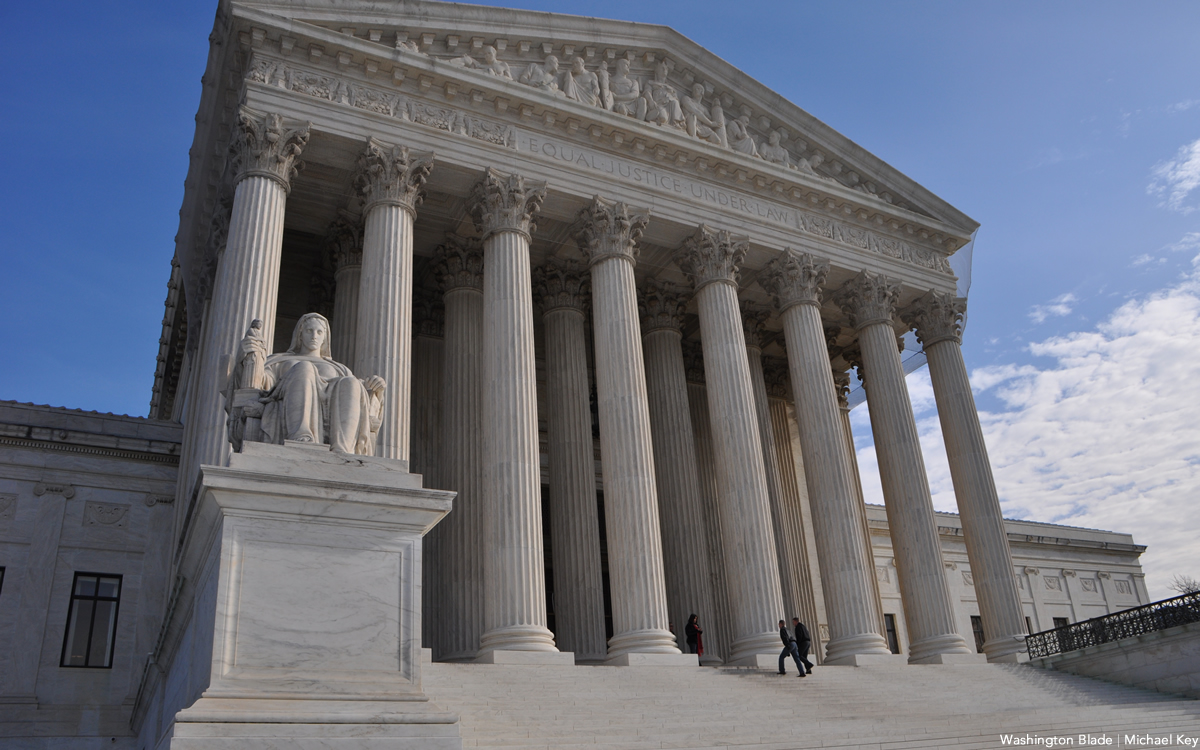
As soon as the final votes are cast and counted and verified after the November 2026 elections are over, the 2028 presidential cycle will begin in earnest. Polls, financial aid requests, and volunteer opportunities ad infinitum will flood the public and personal media. There will be more issues than candidates in both parties. The rending of garments and mudslinging will be both interesting and maybe even amusing as citizens will watch how candidates react to each and every issue of the day.
There is one particular item that I am hoping each candidate will be asked whether in private or in public. If a Supreme Court vacancy occurs in your potential administration, will you nominate an open and qualified LGBTQ to join the remaining eight?
Other interest groups on both sides have made similar demands over the years and have had them honored. Is it not time that our voices are raised as well? There are several already sitting judges on both state and federal benches that have either been elected statewide or approved by the U.S. Senate.
Our communities are being utilized and abused on judicial menus. Enough already! Challenge each and every candidate, regardless of their party with our honest question and see if honest answers are given. By the way … no harm in asking the one-third of the U.S. Senate candidates too who will be on ballots. Looking forward to any candidate tap dancing!
Opinions
2026 elections will bring major changes to D.C. government
Mayor’s office, multiple Council seats up for grabs
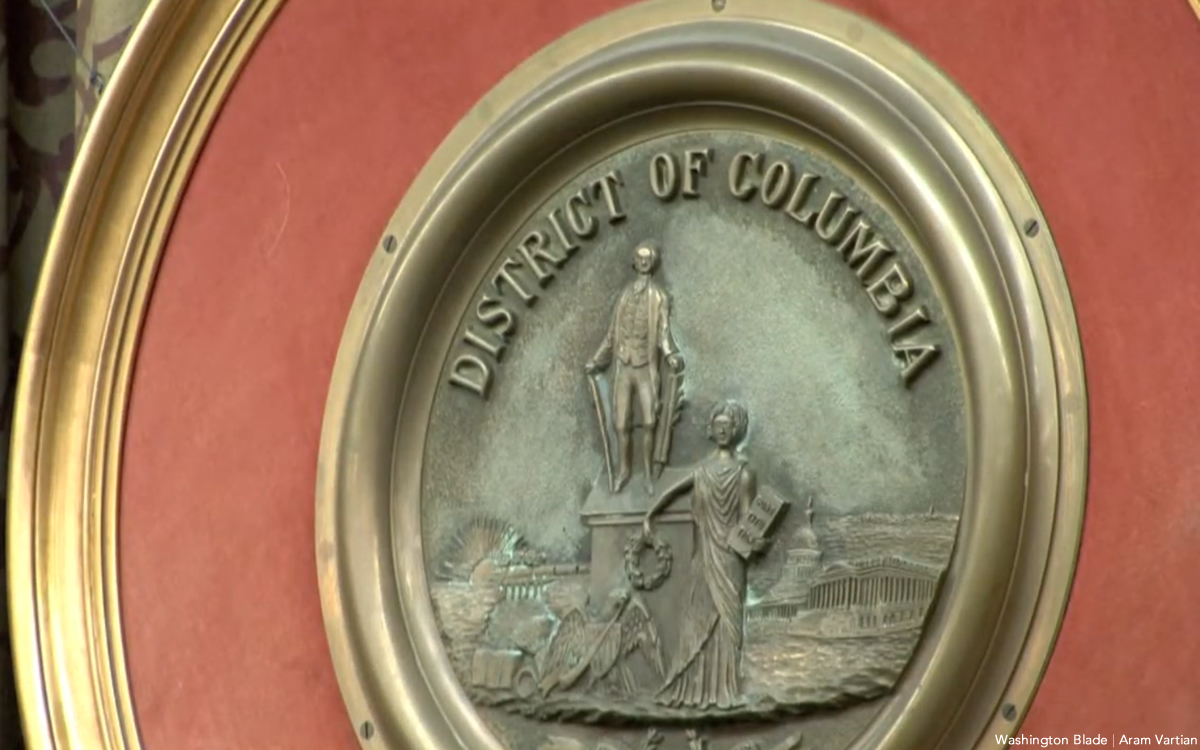
Next year will be a banner year for elections in D.C. The mayor announced she will not run. Two Council members, Anita Bonds, At-large, and Brianne Nadeau, Ward 1, have announced they will not run. Waiting for Del. Norton to do the same, but even if she doesn’t, there will be a real race for that office.
So far, Robert White, Council member at-large, and Brooke Pinto, Council member Ward 2, are among a host of others, who have announced. If one of these Council members should win, there would be a special election for their seat. If Kenyon McDuffie, Council member at-large, announces for mayor as a Democrat, which he is expected to do, he will have to resign his seat on the Council as he fills one of the non-Democratic seats there. Janeese George, Ward 4 Council member, announced she is running for mayor. Should she win, there would be a special election for her seat. Another special election could happen if Trayon White, Ward 8, is convicted of his alleged crimes, when he is brought to trial in January. Both the Council chair, and attorney general, have announced they are seeking reelection, along with a host of other offices that will be on the ballot.
Many of the races could look like the one in Ward 1 where at least six people have already announced. They include three members of the LGBTQ community. It seems the current leader in that race is Jackie Reyes Yanes, a Latina activist, not a member of the LGBTQ community, who worked for Mayor Fenty as head of the Latino Affairs Office, and for Mayor Bowser as head of the Office of Community Affairs. About eight, including the two Council members, have already announced they are running for the delegate seat.
I am often asked by candidates for an endorsement. The reason being my years as a community, LGBTQ, and Democratic, activist; and my ability to endorse in my column in the Washington Blade. The only candidate I endorsed so far is Phil Mendelson, for Council chair. While he and I don’t always agree on everything, he’s a staunch supporter of the LGBTQ community, a rational person, and we need someone with a steady hand if there really are six new Council members, out of the 13.
When candidates call, they realize I am a policy wonk. My unsolicited advice to all candidates is: Do more than talk in generalities, be specific and honest as to what you think you can do, if elected. Candidates running for a legislative office, should talk about what bills they will support, and then what new ones they will introduce. What are the first three things you will focus on for your constituents, if elected. If you are running against an incumbent, what do you think you can do differently than the person you hope to replace? For any new policies and programs you propose, if there is a cost, let constituents know how you intend to pay for them. Take the time to learn the city budget, and how money is currently being spent. The more information you have at your fingertips, the smarter you sound, and voters respect that, at least many do. If you are running for mayor, you need to develop a full platform, covering all the issues the city will face, something I have helped a number of previous mayors do. The next mayor will continue to have to deal with the felon in the White House. He/she/they will have to ensure he doesn’t try to eliminate home rule. The next mayor will have to understand how to walk a similar tightrope Mayor Bowser has balanced so effectively.
Currently, the District provides lots of public money to candidates. If you decide to take it, know the details. The city makes it too easy to get. But while it is available, take advantage of it. One new variable in this election is the implementation of rank-choice voting. It will impact how you campaign. If you attack another candidate, you may not be the second, or even third, choice, of their strongest supporters.
Each candidate needs a website. Aside from asking for donations and volunteers, it should have a robust issues section, biography, endorsements, and news. One example I share with candidates is my friend Zach Wahls’s website. He is running for United States Senate from Iowa. It is a comprehensive site, easy to navigate, with concise language, and great pictures. One thing to remember is that D.C. is overwhelmingly Democratic. Chances are the winner of the Democratic primary will win the general election.
Potential candidates should read the DCBOE calendar. Petitions will be available at the Board of Elections on Jan. 23, with the primary on June 16th, and general election on Nov. 3. So, ready, set, go!
Peter Rosenstein is a longtime LGBTQ rights and Democratic Party activist.
Opinions
Lighting candles in a time of exhaustion
Gunmen killed 15 people at Sydney Hanukkah celebration
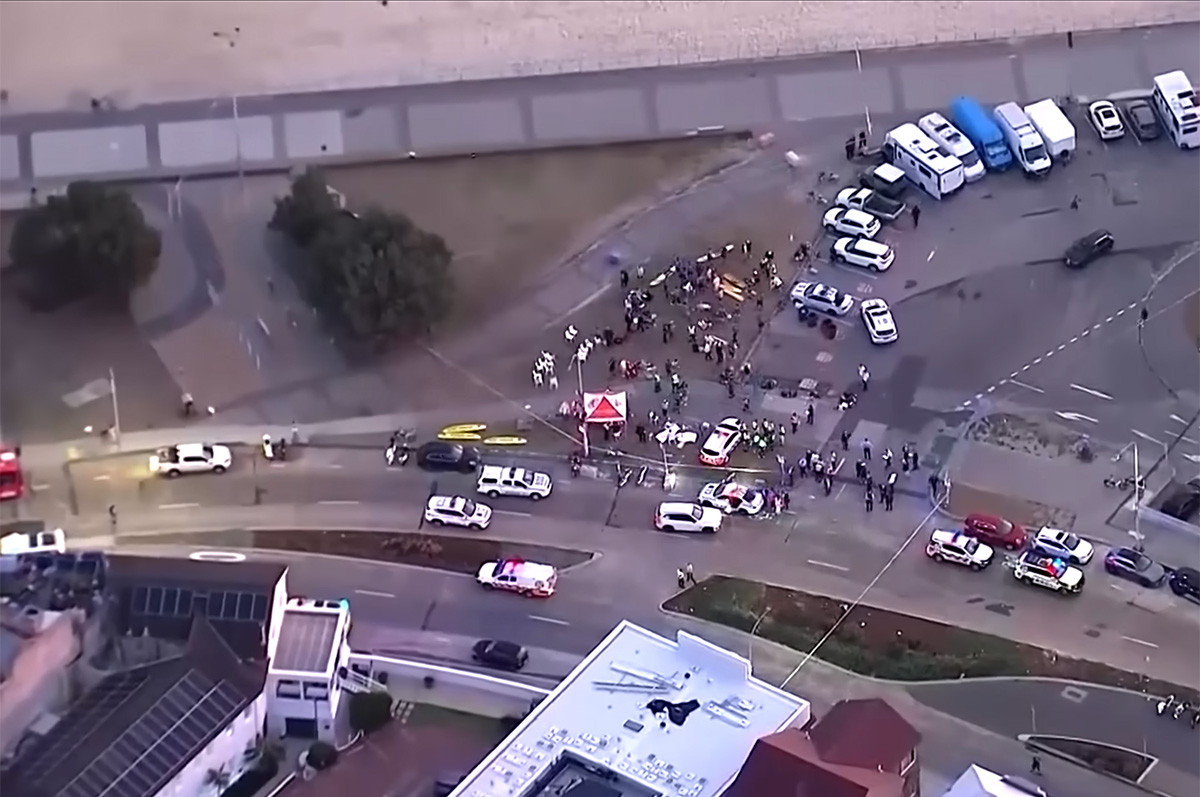
In the wake of the shooting at Bondi Beach that targeted Jews, many of us are sitting with a familiar feeling: exhaustion. Not shock or surprise, but the deep weariness that comes from knowing this violence continues. It is yet another reminder that antisemitism remains persistent.
Bondi Beach is far from Washington, D.C., but antisemitism does not respect geography. When Jews are attacked anywhere, Jews everywhere feel it. We check on family and friends, absorb the headlines, and brace ourselves for the quiet, numbing normalization that has followed acts of mass violence.
Many of us live at an intersection where threats can come from multiple directions. As a community, we have embraced the concept of intersectional identity, and yet in queer spaces, many LGBTQ+ Jews are being implicitly or explicitly asked to play down our Jewishness. Jews hesitate before wearing a Magen David or a kippah. Some of us have learned to compartmentalize our identities, deciding which part of ourselves feels safest to lead with. Are we welcome as queer people only if we mute our Jewishness? Are those around us able to acknowledge that our fear is not abstract, but rooted in a lived reality, one in which our friends and family are directly affected by the rise in antisemitic violence, globally and here at home?
As a result of these experiences, many LGBTQ+ Jews feel a growing fatigue. We are told, implicitly or explicitly, that our fear is inconvenient; that Jewish trauma must be contextualized, minimized, or deferred in favor of other injustices. Certainly, the world is full of horror. And yet, we long for a world in which all lives are cherished and safe, where solidarity is not conditional on political purity or on which parts of ourselves are deemed acceptable to love.
We are now in the season of Chanuka. The story of this holiday is not one of darkness vanishing overnight. It is the story of a fragile light that should not have lasted. Chanuka teaches us that hope does not require certainty; it requires persistence and the courage to kindle a flame even when the darkness feels overwhelming.
For LGBTQ+ Jews, this lesson resonates deeply. We have survived by refusing to disappear across multiple dimensions of our identities. We have built communities, created rituals, and embraced chosen families that affirm the fullness of who we are.
To our LGBTQ+ siblings who are not Jewish: this is a moment to listen, to stand with us, and to make space for our grief. Solidarity means showing up not only when it is easy or popular, but especially when it is uncomfortable.
To our fellow Jews: your exhaustion is valid. Your fear is understandable, and so is your hope. Every candle lit this Chanuka is an act of resilience. Every refusal to hide, every moment of joy, is a declaration that hatred will not have the final word.
Light does not deny darkness. It confronts it.
As we light our candles this Chanuka season, may we protect one another and bring light to one another, even as the world too often responds to difference with violence and hate.
Joshua Maxey is the executive director of Bet Mishpachah, D.C.’s LGBTQ synagogue.



